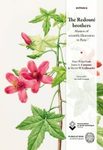Call us (08:30-16:00 UK)
01803 865913International
+44 1803 865913Need Help?
Help pagesImportant Notice for US Customers
Due to changes at US Customs we will be only processing the shipping of orders through UPS. The purchase cost does not include any costs incurred from US Customs and the receiver will be liable for all import duties and taxes associated with their order. Should the order be returned undelivered, please note the refund will be processed minus the shipping costs.
Certain goods from specific countries are subject to higher tariffs and import restrictions. Ensure you check the regulations regarding the country of origin of your items to avoid unexpected charges or delays. Also ensure you select "business address" or "home address" when adding a new address to ensure your order is reported correctly
If you have any questions or need help with placing your order, please contact our Customer Services Team or select "Quotation" as the payment method online. Furthermore you can contact your local customs office for further information.
Wildlife Survey & Monitoring
- Aquatic Survey & Monitoring
- Professional Hand & Kick Nets
- Water Testing
- Waders & Aquatic Safety
- View All
- Amphibian & Reptile Survey
- Amphibian Survey & Monitoring
- Reptile Survey & Monitoring
- Scales, Balances & Holding Bags
- View All
Field Guides & Natural History
Academic & Professional Books
- Evolutionary Biology
- Evolution
- Human Evolution & Anthropology
- Cladistics, Phylogeny & Taxonomy
- View All
British Wildlife
British Wildlife is the leading natural history magazine in the UK, providing essential reading for both enthusiast and professional naturalists and wildlife conservationists. Published eight times a year, British Wildlife bridges the gap between popular writing and scientific literature through a combination of long-form articles, regular columns and reports, book reviews and letters.
Conservation Land Management
Conservation Land Management (CLM) is a quarterly magazine that is widely regarded as essential reading for all who are involved in land management for nature conservation, across the British Isles. CLM includes long-form articles, events listings, publication reviews, new product information and updates, reports of conferences and letters.





![Atlas des Amphibiens et Reptiles de Martinique [Atlas of Amphibians and Reptiles of Martinique] Atlas des Amphibiens et Reptiles de Martinique [Atlas of Amphibians and Reptiles of Martinique]](http://mediacdn.nhbs.com/jackets/jackets_resizer_xlarge/24/243565.jpg?height=620)
![Atlas des Amphibiens et Reptiles de Martinique [Atlas of Amphibians and Reptiles of Martinique]](http://mediacdn.nhbs.com/jackets/jackets_resizer/24/243565.jpg)





![Atlas des Amphibiens et des Reptiles Terrestres de l'Archipel des Comores [Atlas of Amphibians and Terrestrial Reptiles of the Comoros Archipelago]](http://mediacdn.nhbs.com/jackets/jackets_resizer_medium/24/247858.jpg?height=150&width=103)
![Atlas des Amphibiens et Reptiles de Martinique [Atlas of Amphibians and Reptiles of Martinique]](http://mediacdn.nhbs.com/jackets/jackets_resizer_medium/24/243565.jpg?height=150&width=104)
![La Flore Illustrée de Mayotte [The Illustrated Flora of Mayotte]](http://mediacdn.nhbs.com/jackets/jackets_resizer_medium/24/249350.jpg?height=150&width=106)

![Écologie Acoustique des Chiroptères d'Europe [Acoustic Ecology of European Bats]](http://mediacdn.nhbs.com/jackets/jackets_resizer_medium/22/224996.jpg?height=150&width=103)
![Naïades et Autres Bivalves d'Eau Douce de France [Naiades and Other Freshwater Bivalves of France]](http://mediacdn.nhbs.com/jackets/jackets_resizer_medium/23/239318.jpg?height=150&width=103)
![Coraux Constructeurs de Récifs des Caraïbes [Coral Reef Builders of the Caribbean]](http://mediacdn.nhbs.com/jackets/jackets_resizer_medium/24/247989.jpg?height=150&width=103)
![Coraux Constructeurs de Récifs des Caraïbes [Coral Reef Builders of the Caribbean]](http://mediacdn.nhbs.com/jackets/jackets_resizer_medium/24/249211.jpg?height=150&width=99)













![Les Crustacés Décapodes des Petites Antilles: Avec de Nouvelles Observations pour Saint-Martin, la Guadeloupe et la Martinique [The Crustacean Decapods of the Lesser Antilles: With New Observations for Saint-Martin, Guadeloupe and Martinique]](http://mediacdn.nhbs.com/jackets/jackets_resizer_medium/24/245203.jpg?height=150&width=106)


![Flora of Cambodia, Laos and Vietnam, Volume 36 [Faune et Flore Tropicales, Volume 47]](http://mediacdn.nhbs.com/jackets/jackets_resizer_medium/24/245033.jpg?height=150&width=101)
![Flora of Cambodia, Laos and Vietnam, Volume 37 [Faune et Flore Tropicales, Volume 52]](http://mediacdn.nhbs.com/jackets/jackets_resizer_medium/26/266628.jpg?height=150&width=103)
![Les Chauves-Souris de Guyane [The Bats of French Guiana]](http://mediacdn.nhbs.com/jackets/jackets_resizer_medium/13/134247.jpg?height=150&width=100)
![Atlas des Mammifères Sauvages de France, Volume 3: Carnivores et Primates [Atlas of Wild Mammals of France, Volume 3: Carnivores and Primates]](http://mediacdn.nhbs.com/jackets/jackets_resizer_medium/26/263780.jpg?height=150&width=106)



